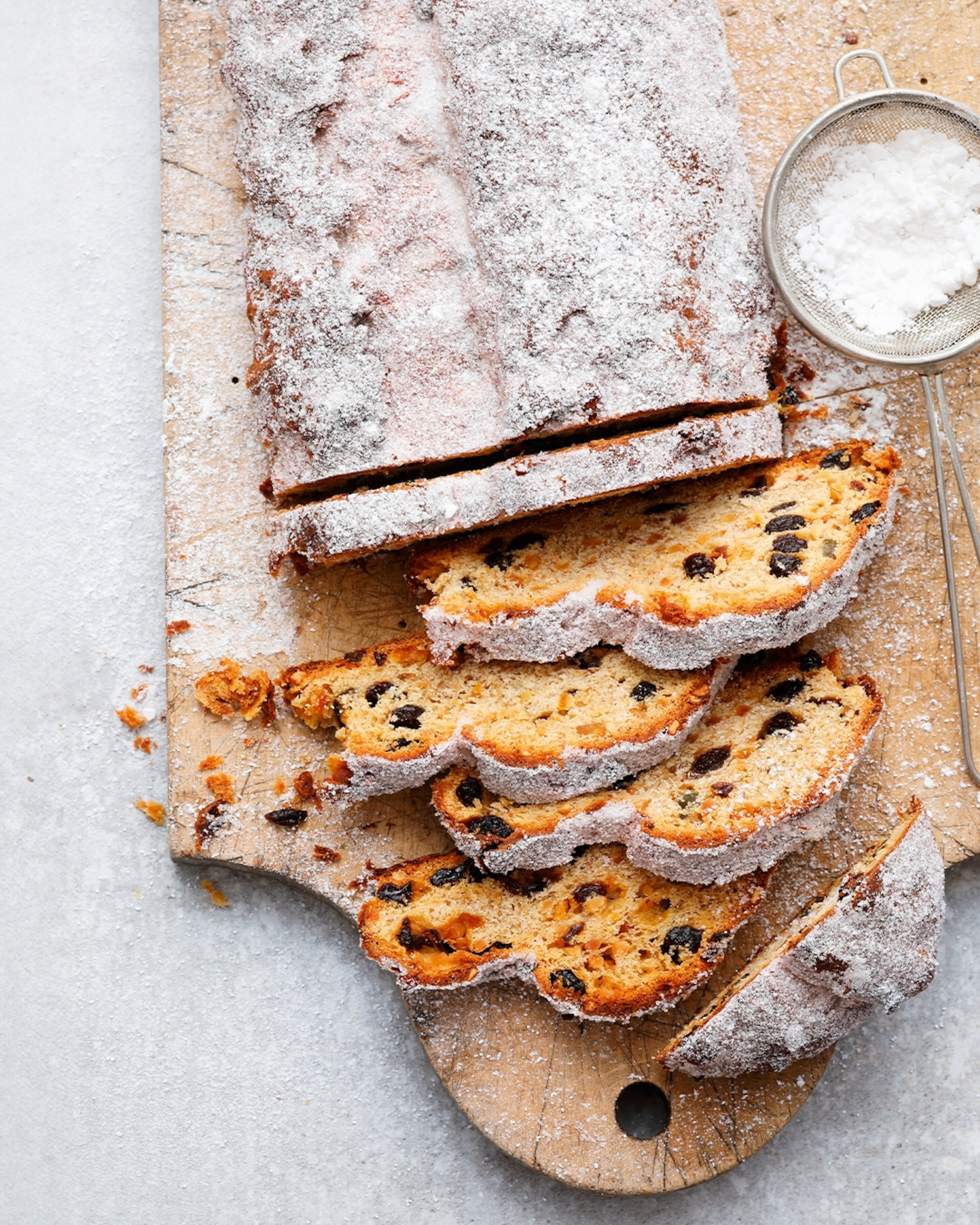
How to make the perfect stollen for Christmas
A German Christmas classic, this sweet bread comes in numerous delicious varieties.
For me, stollen – and in particular Dresden-style stollen – is inseparable from Christmas. Usually, my parents would give it to me as a Christmas gift and it was a real treat on the coffee table. This sweet German bread is available in many different varieties, but whichever you decide to make, here are a few tips to help make it perfect.
The first written mention of stollen, from 1329, describes a long bread made of flour, water and oil. Around 1430, though, a baker called Drasdo from the city of Torgau made what can be seen as a real ancestor of modern stollen, as it was enriched with butter. Today, there are over 300 types.
Fillings & flavourings
Stollen is enriched with butter and other dairy such as quark, yoghurt or cream. Nuts (almonds, hazelnuts, walnuts), fruit (raisins, currants, sultanas, candied fruit and peel), seeds (traditionally poppy) and spices such as cardamom and nutmeg are a given. Marzipan is an optional extra.
Raising agent
A pre-ferment (flour mixed with milk and yeast a day ahead) is common, but a sourdough starter can also be used. Quarkstollen, a variety using quark cheese, is simpler, as it’s leavened with baking powder, and is delicious right after baking and cooling, but will improve over time.
Shaping
Turn your dough out onto a well-floured surface and shape into a flat rectangle. Fold in half lengthways — no need to tuck in the edges. If adding marzipan, roll it into a log as long as your stollen, flatten it slightly and place along the centre of the dough before folding.
Maturing
A fresh yeasted or sourdough stollen will be quite crumbly; it takes at least three weeks to develop its texture and flavours. Brush it with melted butter and let that set completely before dusting with icing sugar. Then, store it wrapped in foil or a sealed container, at room temperature.
Serving
Use a serrated knife to carefully cut your stollen. Slices shouldn’t be too thick, about 4–6mm. Spread some butter — and honey, if you like — on it and enjoy with tea or coffee. A yeasted stollen will last several months in an airtight container — a baking-powder version will last weeks.
Dresden-style Christmas stollen recipe
The most famous and celebrated stollen is Dresdner stollen, now trademarked, from the city of Dresden in Saxony. It’s laden with fruit and is made with double cream and lots of butter. It keeps extremely well and needs several weeks to mature and let all the flavours unfold.
Serves: 20
Takes: 5 hrs plus overnight resting
Ingredients
For the starter:
250g bread flour
7g instant yeast
250ml double cream
For the dough:
250g raisins
250g sultanas
250g currants
100ml rum
250g bread flour
500g plain flour
125g caster sugar
7g instant yeast
2g ground mace
2g ground cardamom
2g ground cinnamon
2 lemons, zested
500g unsalted butter, cubed, room temperature
200g mixed peel
200g ground almonds
250g unsalted butter, melted, for coating
250g icing sugar, for coating
Method
1. To make the starter, mix the flour, instant yeast and cream together and leave to stand at room temperature for 1 hr. Put the starter in the fridge overnight. Meanwhile, the same day, boil a kettle. Put the raisins, sultanas and currants in a bowl. Add the rum, then pour as much boiling water over the fruit as needed to just cover them. Cover with clingfilm and leave to stand overnight.
2. The next day, prepare the dough. Mix together the starter, both flours, sugar, yeast, spices and lemon zest. Work the butter into this mix and knead. (This might seem impossible at first, but it will come together nicely. I like to do it in a 10-litre bowl using my hands – normal household mixers won’t be able to cope with this dough.)
3. Drain the dried fruit and add to the dough, along with the mixed peel and ground almonds, and incorporate into the dough (use a big plastic spatula and work until it all comes together).
4. Use your hands to push the dough into a rectangle and fold it lengthwise onto itself. Add a little flour if it gets too sticky. You can make one large stollen or a few smaller ones, but I wouldn’t recommend making stollen smaller than 800g; I find larger stollen give a better texture.
5. Transfer the stollen onto a lined baking sheet and leave to prove at room temperature for around 2 hrs. The stollen will hardly rise.
6. Heat oven to 190C, 170C fan, gas 5. Bake the stollen for 1 hr to 1 hr 30 mins, depending on size, until it’s dark golden-brown (if it gets dark too early, cover it with foil). While the stollen is still hot, brush it with melted butter until it’s saturated.
7. Once cool, cover the stollen in plenty of icing sugar and keep it in an airtight container or plastic bag for at least 3 weeks before cutting into it. It will last for several months in an airtight container.
Dresden-style Christmas stollen recipe
Taken from German Baking: Cakes, Tarts, Traybakes and Breads from the Black Forest and Beyond by Jürgen Krauss (£26, Kyle Books)
To subscribe to National Geographic Traveller (UK) magazine click here. (Available in select countries only).





